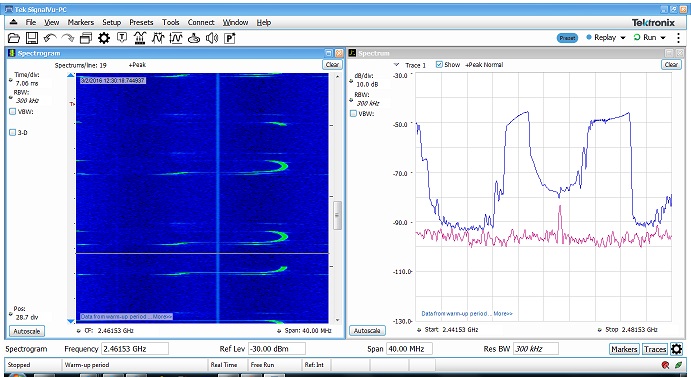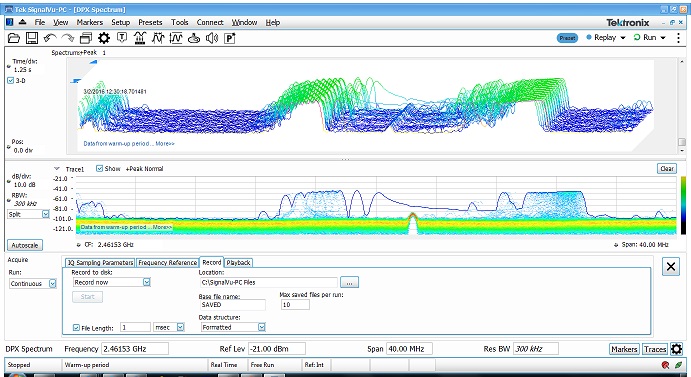

When hitting the street to track down a source of interference, how many time have you gone out with your spectrum analyzer and then when you got back realized you forgot to make one particular measurement? This is particularly annoying when the site you were investigating is in a remote location with limited access.
In such situations, would it be helpful to know that your Tektronix spectrum analyzer has your back?
Spectrum analyzers have evolved over the years. Today it is common for the instrument to have some form of USB interface that allows you to store information on a USB memory stick. It is common practice nowadays for users to store a screen capture when they need to record a measurement. Trouble is, this is a static measurement and does not provide any context on how the RF environment is changing over time
That’s where Tektronix real-time spectrum analyzers (RTSAs) comes in. Some people insist that real-time is little more than marketing, but the reality is that RTSAs offer some very advanced features that aren’t found in conventional spectrum analyzers. Simply put, RTSAs don’t sweep the spectrum like other spectrum analyzers. For up to their maximum real-time span a RTSA is capable of continuously recording the spectrum.
So what does this really mean? When running the SignalVu-PC signal analysis application the user can specify the length of capture for a specific real-time span. Many captures (or acquisitions) can be stored in the single file that can be easily saved. The saved file can then be sent to anyone else who has SignalVu-PC (a base version is a free download) and played-back on their own PC. Needless to say, this technique provides a lot more information that just a simple screen shot.

As useful as this feature is, there is a still more powerful way that we can record spectrum data with SignalVu-PC. It is possible for users to directly stream to disk all of the RF information from the real-time span. The advantage here is the ALL of the information is stored without any gaps in time. Just like the previous example the recorded files can shared, but much more information is contained in the file. It is even possible to change the RBW value during playback to get more sensitivity in some particular measurements!

So now when we are at a remote site and we want to make sure that we don’t miss anything, we can record the raw spectrum data directly to disk. In the event that we need another measurement, we have the ability to directly play-back the spectrum data with SignalVu-PC without the aggravation and expense of returning to the remote site.
This concludes our four-part series on interference hunting. We hope you found it useful and be sure to check back for future posts as interference hunting technologies continue to evolve.
For more information on spectrum management and interference hunting be sure to visit our resource center. You’ll find a wealth of information such as our useful and informative Spectrum Allocation Poster.
Read the other entires in this series here:
Part 1: Get the insight you need to see interference in a crowded spectrum
Part 2: How often is the interference happening?
Part 3: Use Mask Search to automatically discover when interference is happening
About the Author
Robin Jackman is a field applications engineer based in Toronto, Ontario. He has been with Tektronix for more than 15 years supporting customer applications throughout North America. His work with Tektronix has covered both analog and digital design with a focus on RF applications. Prior to Tektronix he spent 12 years working for the federal government in spectrum management.



